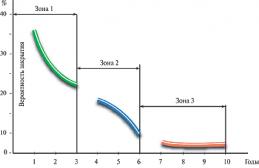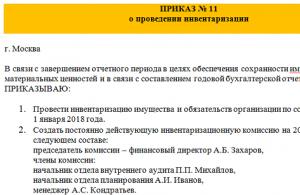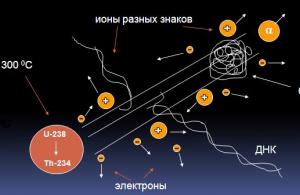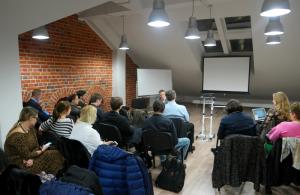Question 1: The database is:
a) a collection of data organized according to certain rules;
b) a set of programs for storing and processing large amounts of information;
c) an interface that supports data filling and manipulation;
d) a specific set of information.
Question 2. The most common in practice are:
a) distributed databases;
b) hierarchical databases;
c) network databases;
d) relational databases.
Question 3. The most accurate analogue of a relational database can be:
a) an unordered set of data;
b) vector;
c) family tree;
d) two-dimensional table.
Question 4. Tables in databases are intended to:
a) for storing database data;
Question 5. Which of the following is not an Access object:
a) modules;
b) tables;
c) macros;
Question 6. What are the requests for?
a) for storing database data;
b) for selection and processing of database data
c) to enter database data and view it;
Question 7. What are the forms for?
a) for storing database data;
b) to select and process database data;
c) to enter database data and view it;
d) to automatically execute a group of commands.
Question 8. What are the modules for:
a) for storing database data;
b) to select and process database data;
c) to enter database data and view it;
d) to perform complex program actions.
Question 9. What are macros for?
a) for storing database data;
b) to select and process database data;
c) to enter database data and view it;
d) to automatically execute a group of commands.
Question 10. In which dialog box are relationships created between fields of database tables:
a) link table;
b) connection diagram;
c) data schema;
d) data table?
Question 11. Why, when closing a table, Access does not prompt you to save the entered data:
a) The developers of MS Access, when creating this program, provided that users would automatically save the created tables and data after filling out each field, each table, each performed operation;
b) Flaw in the program;
c) Because the data is saved immediately after being entered into the table;
d) Because the data is saved only after the entire database is closed;
Question 12. Without which objects a database cannot exist:
a) without modules;
b) without reports and requests;
c) without tables;
d) without forms and macros.
Question 13. Which table elements store database data:
a) in fields and lines;
b) in columns;
c) in records;
d) in cells.
Question 14. Does a table that has no records contain any information?
a) an empty table does not contain any information;
b) an empty table contains information about the structure of the database;
c) an empty table contains information about future entries;
d) a table cannot exist without records.
Question 15. Does a table that has no fields contain any information?
a) contains information about the structure of the database;
b) does not contain any information;
c) a table without fields cannot exist;
d) contains information about future entries.
Question 16. What is special about the "counter" field?
b) the data is stored in a location other than the field, and the field only stores a pointer to where the text is located;
c) has a limited size;
d) has the property of automatic growth.
Question 17. What is special about the "memo" field?
a) serves to enter numerical data;
b) serves to enter real numbers;
c) the data is stored in a location other than the field, and the field only stores a pointer to where the text is located;
d) has a limited size and automatic growth property.
a) a field whose values cannot be repeated;
b) a field that has a unique name;
c) a field whose contents are typed manually;
d) a field whose value has incremental property.
Question 19. Search keys in database management systems (DBMS) are called:
a) the range of records of the database file in which the search is carried out;
b) logical expressions defining search conditions;
c) fields whose value is used to search;
d) numbers of records satisfying the search conditions.
Test on the topic "Databases in spreadsheets."1. Database is:
a collection of data organized according to certain rules;
a set of programs for storing and processing large amounts of information;
an interface that supports filling and manipulating data;
a certain set of information.
2. The most common in practice are:
distributed databases;
hierarchical databases;
network databases;
relational databases.
3. Tables in databases are intended to:
for storing database data;
to perform complex program actions.
4. What are the requests for?
for storing database data;
for selecting and processing database data;
to enter database data and view it;
for automatic execution of a group of commands;
to perform complex program actions;
to output processed database data to a printer?
5. What are the forms for?
for storing database data;
for selecting and processing database data;
to enter database data and view it;
for automatic execution of a group of commands;
to perform complex program actions?
6. In what mode does the user work with the database:
in design;
in amateur;
in a given;
in operationalm?
7. In which dialog box are connections between fields of database tables created? :
connection table;
connection diagram;
data schema;
data table?
8. Without which objects a database cannot exist:
without modules;
no reports;
without tables;
without forms;
no macros;
without requests?
9. In which table elements are database data stored:
in the fields;
in lines;
in columns;
in the records;
in cells?
10. Does a table that does not have any records contain any information?
an empty table does not contain any information;
an empty table contains information about the database structure;
an empty table contains information about future records;
a table without records cannot exist.
11. Does a table that has no fields contain any information?
contains information about the structure of the database;
does not contain any information;
a table without fields cannot exist;
contains information about future entries.
12. Search keys in database management systems (DBMS) are called :
the range of records in the database file in which the search is carried out;
logical expressions that define search conditions;
fields whose value is used to search;
numbers of records that satisfy the search conditions;
number of the first record in order that satisfies the search conditions?
>>Informatics 11th grade >>Informatics: Forums and their meanings. Robot rules for forums.
Practical work on the subject Computer Science 11th grade.
View by those: Forums and their reasons. Robot rules for forums.
DATABASE
TEST
1. Database is:
1. a set of data organized according to certain rules;
2. a set of programs for storing and processing large amounts of information;
3. interface that supports filling and manipulating data;
4. a certain set of information.
2. The most common in practice are:
1. distributed databases;
2. hierarchical databases;
3. network databases;
4. relational databases.
3. The most accurate analogue of a relational database can be:
1. unordered set of data;
2. vector;
3. family tree;
4. two-dimensional table.
4. Tables in databases are intended to:
1. for storing database data;
5. to perform complex program actions.
5. Which of the following is not an Access object:
1. modules;
2. tables;
3. macros;
4. keys;
5. shapes;
6. reports;
7. requests?
6. What are the requests for?
1. for storing database data;
2. for selecting and processing database data;
3. to enter database data and view it;
4. for automatic execution of a group of commands;
5. to perform complex program actions;
6. to output processed database data to a printer?
7. What are the forms for?
1. for storing database data;
2. for selecting and processing database data;
3. to enter database data and view it;
4. for automatic execution of a group of commands;
8. What are the modules for:
1. for storing database data;
2. for selecting and processing database data;
3. to enter database data and view it;
4. for automatic execution of a group of commands;
5. to perform complex program actions?
9. What are macros for:
1. for storing database data;
2. for selecting and processing database data;
3. to enter database data and view it;
4. for automatic execution of a group of commands;
5. to perform complex program actions?
10. In what mode does the user work with the database:
1. in design;
2. in amateur;
3. in a given;
4. in operational?
11. In which dialog box are connections between fields of database tables created:
1. table of connections;
2. connection diagram;
3. data schema;
4. data table?
12. Why, when closing a table, Access does not offer to save the entered data:
1. flaw in the program;
2. because the data is saved immediately after being entered into the table;
3. because the data is only saved after the entire database is closed?
13. Without which objects a database cannot exist:
1. without modules;
2. without reports;
3. without tables;
4. without forms;
5. no macros;
6. without requests?
14. In which table elements are database data stored:
1. in the fields;
2. in lines;
3. in columns;
4. in records;
5. in cells?
15. Does a table that does not have any records contain any information?
1. an empty table does not contain any information;
2. an empty table contains information about the structure of the database;
3. an empty table contains information about future records;
4. a table cannot exist without records.
16. Does a table that has no fields contain any information?
1. contains information about the structure of the database;
2. does not contain any information;
3. a table without fields cannot exist;
4. contains information about future entries.
17. What is special about the “counter” field?
18. What is special about the “memo” field?
1. serves to enter numerical data;
2. used to enter real numbers;
3. the data is stored not in the field, but in another place, and only a pointer to where the text is located is stored in the field;
4. has a limited size;
5. Has the property of automatic extension.
1. a field in which values cannot be repeated;
2. a field that has a unique name;
3. a field whose value has the property of increasing.
20. Search keys in database management systems (DBMS) are called:
1. range of records in the database file in which the search is carried out;
2. logical expressions defining search conditions;
3. fields by the value of which the search is carried out;
4. numbers of records that satisfy the search conditions;
5. number of the first record in order that satisfies the search conditions?
KEY
1 2 3 4 5 6 7 8 9 10 11 12 13 14 15 16 17 18 19 20
1 4 4 1 4 2 3 5 4 4 3 2 3 5 2 3 5 3 1 3
Sent by the computer science teacher of the Specialized School No. 252 of the Obolonsky district of Kiev, O.I. Zhitinskaya.
Computer science for 11th grade free download, lesson plans, getting ready for school
indicating:
Test Option-1
Exercise:
1. Database is:
B. arbitrary data set
C. to store database data
A. requests
B. shapes
C. lists
D. reports
A. to store database data
B. to select database data
B. for storing database data
D. to output processed database data to a printer
The table field is
A. column in a table
B. designer window
C. text of any size
D. row in the table
A. no reports
B. no requests
C. no tables
D. without forms
A. in columns
B. in the records
C. in lines
D. in the fields
D. In the Name field the condition<АБВ
A.<400
B.<=400
C. >400
D. >=400
16. Place<= 5 И (В >4 OR M3 > 12)"(symbol<= означает «меньше или равно»)?
| Place | Team | IN | N | P | ABOUT | MOH | MP |
| Fighter | |||||||
| Vanguard | |||||||
| Edge | |||||||
| Star | |||||||
| Chemist | |||||||
| Pirate |
A. 5 B. 2 C. 3 D. 4
17.
A. data schema
B. connection diagram
C. link table
D. data structure
C. for selecting and processing database data
D. to store database data
A. requests
B. reports
C. tables
D. shapes
Lesson_number > 2 I Class > "8A"
Option 2
Exercise:Choose the correct answer to the questions.
1. Database is:
A. any text file
D. database data storage
A. to enter database data and view it
B. to output processed database data to a printer
C. to select database data
D. to store database data
A. to enter database data and view it
B. to output processed database data to a printer
C. for selecting and processing database data
D. to store database data
A. no requests
B. no reports
C. no tables
D. without forms
A. requests
B. reports
C. tables
D. shapes
A. table structures are the same
A. requests
B. shapes
C. keys
D. reports
The table column contains
D.numeric data
A. hierarchical databases
B. relational databases
C. network databases
D. tabular databases
Requirements for differentiated credit for industrial practice in PM02.
The purpose of assessment for educational and industrial practice is to establish the degree of mastery of:
1) professional and general competencies;
2) practical experience and skills.
The programming technician must have professional competencies, corresponding to the main types of professional activities in PM 02 Development and administration of databases.
PC 2.1. Develop database objects.
PC 2.2. Implement a database in a specific database management system (DBMS).
PC 2.3. Solve database administration issues.
PC 2.4. Implement methods and technologies for protecting information in databases.
Differentiated credit for industrial practice is awarded based on the data on the certification sheet indicating: types of work performed by the student during the internship, their volume, quality of performance in accordance with the technology and requirements of the organization in which the internship took place.
Test Option-1
Exercise:Choose the correct answer to the questions.
1. Database is:
A. program for sorting and searching data
B. arbitrary data set
C. any table containing information
D. a collection of structured data
2. Which of the following properties is not a property of a relational database:
A. A table must have only one parent table
B.The order of rows in the table is arbitrary
C.Each column has a unique name
D. You can define a primary key for each table
3. Tables in databases are intended to:
A. for selecting and processing database data
B. to output processed database data to a printer
C. to store database data
D. to enter database data and view it
4. Which of the following is not an Access object?
A. requests
B. shapes
C. lists
D. reports
5. What are the requests for?
A. to store database data
B. to select database data
C. to enter database data and view it
D. to output processed database data to a printer
6. What are the forms for?
A. to enter database data and view it
B. for storing database data
C. for selecting and processing database data
D. to output processed database data to a printer
The table field is
A. column in a table
B. designer window
C. text of any size
D. row in the table
8. Without which objects a database cannot exist:
A. no reports
B. no requests
C. no tables
D. without forms
9. In which table elements are database data stored:
A. in columns
B. in the records
C. in lines
D. in the fields
10. Does a table that does not have any records contain any information?
A. a table cannot exist without records
B. an empty table contains information about the structure of the database
C. an empty table contains information about the structure of future records
D. an empty table contains no information
11. Does a table that has no fields contain any information?
A. contains information about future entries
B. contains information about the structure of the database
C. a table without fields cannot exist
D. does not contain any information
12. What is special about the “counter” field?
A. is used to enter real numbers
B. has the property of automatic extension
C. is used to enter numeric information
D. value can be entered manually
13. Which field can be made key?
A. A field whose value has an incremental property
B. A field that has a unique name
C. A field whose values cannot be repeated in different records
D. The first field in the table
14. The conditions for selecting books in English will be written:
A. In the Language field the condition is "English"
B. In the Country field, the condition is "USA"
C. In the Country field the condition is "USA" or "England"
D. In the Name field the condition<АБВ
15. How to write a condition in a request that the number of pages in a book must be at least 400:
A.<400
B.<=400
C. >400
D. >=400
16. How many entries in the following fragment of the tournament table satisfy the condition “ Place<= 5 И (В >4 OR M3 > 12)"(symbol<= означает «меньше или равно»)?
| Place | Team | IN | N | P | ABOUT | MOH | MP |
| Fighter | |||||||
| Vanguard | |||||||
| Edge | |||||||
| Star | |||||||
| Chemist | |||||||
| Pirate |
A. 5 B. 2 C. 3 D. 4
17.
In which dialog box are relationships created between fields of database tables:
A. data schema
B. connection diagram
C. link table
D. data structure
18. What are indexes used for?
A. to view the data view.
B. to sort data and create table relationships
C. for selecting and processing database data
D. to store database data
19. What tools are used to search and sort data in the Access DBMS:
A. requests
B. reports
C. tables
D. shapes
20. The table shows several records from the Schedule database:
Specify the numbers of records that satisfy the condition
Lesson_number > 2 I Class > "8A"
A. 1, 6 B. 2, 6 C. 2, 5, 6 D. 1, 2, 5, 6
Option 2
Exercise:Choose the correct answer to the questions.
1. Database is:
A. any text file
B. organized structure for storing information
C. any information presented in tabular form
D. any spreadsheet
2. The main purpose of Tables in databases:
A. entering database data and viewing it
B. output of processed database data to a printer
C. selection and processing of database data
D. database data storage
3. What are the requests for?
A. to enter database data and view it
B. to output processed database data to a printer
C. to select database data
D. to store database data
4. What are the forms for?
A. to enter database data and view it
B. to output processed database data to a printer
C. for selecting and processing database data
D. to store database data
5. Without which objects a database cannot exist:
A. no requests
B. no reports
C. no tables
D. without forms
6. What are the differences between sorting database records and sorting data in an Excel table:
A. Only one column is sorted, the data in other columns remains unchanged
B. Columns are sorted along with entire records
C. The user can choose to sort just one column or the entire table
7. What tools are used to search and sort data in the Access DBMS:
A. requests
B. reports
C. tables
D. shapes
8. What is the result of creating a request?
A. List of objects that satisfy the condition
B. Diagram showing the required fields and formula for selecting data
C. A table containing a set of data that satisfies the condition
D. Form in which all necessary entries are written down
9. Tables are called linked if:
A. table structures are the same
B. tables have a common key field
C. tables have more than one index
10. Which of the following is not an Access object?
A. requests
B. shapes
C. keys
D. reports
The conceptual level of the database is
A. Defining data access
B. description of the information presented in the database
C. physical data storage structure
D. determining the number of key fields
The table column contains
A. information about the totality of all properties of an entity
B. specific value of any of the entity properties
C. the value of one of the entity's attributes
D.numeric data
The table is called the main (parent)
A. if all the database data is presented in this table
C. if it contains a primary key that is linked to a foreign key of another table
D. if she has a lot of information
14. Databases with related tables are called:
A. hierarchical databases
B. relational databases
C. network databases
D. tabular databases
15. Key fields in the database are necessary for:
A. creating a relationship between tables
B. presenting data in sorted form
C.parent table definitions
Test on the topic “Databases”
^ 1. Database is:
a collection of data organized according to certain rules;
a set of programs for storing and processing large amounts of information;
an interface that supports filling and manipulating data;
a certain set of information.
^
2. The most common in practice are:
distributed databases;
hierarchical databases;
network databases;
relational databases.
^
3. The most accurate analogue of a relational database can be:
unordered set of data;
vector;
family tree;
two-dimensional table.
^ 4. Tables in databases are intended to:
for storing database data;
to perform complex program actions.
^
5. Which of the following is not an Access object:
modules;
tables;
macros;
keys;
forms;
reports;
requests?
^
6. What are the requests for?
for storing database data;
for selecting and processing database data;
to enter database data and view it;
for automatic execution of a group of commands;
to perform complex program actions;
to output processed database data to a printer?
^
7. What are the forms for?
for storing database data;
for selecting and processing database data;
to enter database data and view it;
for automatic execution of a group of commands;
^
8. What are the modules for:
for storing database data;
for selecting and processing database data;
to enter database data and view it;
for automatic execution of a group of commands;
to perform complex program actions?
^
9. What are macros for:
for storing database data;
for selecting and processing database data;
to enter database data and view it;
for automatic execution of a group of commands;
to perform complex program actions?
^
10. In what mode does the user work with the database:
in design;
in amateur;
in a given;
in operational?
^
11. In which dialog box are connections between fields of database tables created:
connection table;
connection diagram;
data schema;
data table?
^ 12. Why, when closing a table, Access does not offer to save the entered data:
flaw in the program;
because the data is saved immediately after being entered into the table;
because the data is only saved after the entire database is closed?
^
13. Without which objects a database cannot exist:
without modules;
no reports;
without tables;
without forms;
no macros;
without requests?
^
14. In which table elements are database data stored:
in the fields;
in lines;
in columns;
in the records;
in cells?
15. Does a table that does not have any records contain any information?
an empty table does not contain any information;
an empty table contains information about the database structure;
an empty table contains information about future records;
a table without records cannot exist.
16. Does a table that has no fields contain any information?
contains information about the structure of the database;
does not contain any information;
a table without fields cannot exist;
contains information about future entries.
^ 17. What is special about the “counter” field?
the data is stored not in the field, but in another place, and the field only stores a pointer to where the text is located;
has a limited size;
has the property of automatic extension.
^ 18. What is special about the MEMO field?
serves for entering numeric data;
used to enter real numbers;
the data is stored not in the field, but in another place, and the field only stores a pointer to where the text is located;
has a limited size;
has the property of automatic extension.
^ 19. Which field can be considered unique?
a field whose values cannot be repeated;
a field that has a unique name;
a field whose value has the property of increasing.
20. Search keys in database management systems (DBMS) are called:
the range of records in the database file in which the search is carried out;
logical expressions that define search conditions;
fields whose value is used to search;
numbers of records that satisfy the search conditions;
number of the first record in order that satisfies the search conditions?
Test on DBMS topic
^ 1. From the given definitions, select the definition:
1. What is a database?
2. What is a DBMS?
1. A program with which data is entered and any actions are performed on this data: viewing, sorting, searching, etc.
2. A file in which data is stored in a special format.
^ 2. From the proposed definitions of DBMS data models, select the definitions that correspond to:
1. Hierarchical.
2. Network.
3. Relational.
1. The data model is built on the principle of interconnected tables.
2. One type of object is the main one, all underlying ones are subordinate.
3. Any data type can be a master and a slave at the same time.
^ 3. Which of the following DBMSs is included in the popular Microsoft Office package?
1. Lotus Approach.
2. Microsoft Access.
3. Visual FoxPro.
4. Borland Paradox.
5. Borland dBase.
4. The database contains information about school students: last name, class, test score, practical task score, total number of points. What type of field should the TOTAL POINTS field be?
1. text 2. logical 3. numeric 4. any type 5. date
5 – 6 The relational database is specified by the table:
| FULL NAME. | floor | age | club | sport |
|
| 1 | Panko L.P. | wives | 22 | Sparta | football |
| 2 | Arbuzov A.A. | husband | 20 | Dynamo | skis |
| 3 | Zhiganova P.N. | wives | 19 | Rotor | Football |
| 4 | Ivanov O.G. | husband | 21 | Star | skis |
| 5 | Sedova O.L. | wives | 18 | Sparta | biathlon |
| 6 | Bagaeva S.I. | wives | 23 | Star | skis |
^ 5. Which records will be selected based on the condition:
(club = “Sparta” OR club = “Rotor”) and NOT (gender = “wives”)?
1. 3,5 2. 1,3,5 3. 2,3,4,5 4. 2,4 5. there are no such records
6. Which records will be selected based on the condition:
Sport = “skiing” OR gender = “female” AND age
1. 2,3,4,5,6
2. 3,5,6 3. 1,3,5,6
4. there are no such records 5. 2,3,5,6
^ 7. The database contains information about dogs from the kennel club: name, breed, date of birth, gender, number of medals. what type of fields should the fields be?
1. text, text, numeric, text, numeric
2. text, text, date, text, numeric
3. text, text, date, logical, numeric
4. text, text, numeric, logical, numeric
5. text, text, date, boolean, text
8 – 9 The relational database is specified by the table:
| Name | category | cinema | start of the session |
|
| 1 | Pinocchio | x/f | Ruby | 14 |
| 2 | Dirk | x/f | Spark | 12 |
| 3 | Winnie the Pooh | m/f | Screen | 9 |
| 4 | Thumbelina | m/f | Russia | 10 |
| 5 | Pinocchio | x/f | Spark | 14 |
| 6 | Wait for it! | m/f | Screen | 14 |
| 7 | Two captains | x/f | Russia | 16 |
The entries are numbered 1 to 7 according to their order in the table.
^ 8. Select the main key for the table (assuming that there is one theater in the cinema)
2. cinema + start of the show
3. name + start of session
4. cinema
5. start of the session
^ 9. In what order will the records go if they are sorted by two keys:
name + cinema in ascending order?
1,5,3,4,7,2,6
5,1,3,7,4,2,6
6,2,4,7,3,1,5
6,2,7,4,3,1,5
2,5,4,7,1,3,6
| 1 | 2 | 3 | 4 | 5 | 6 | 7 | 8 | 9 |
| 1 – 2 2 – 1 | 1 – 2 3 – 1 | 2 | 3 | 5 | 1 | 3 | 2 | 1 |
^ Test on the topic “Databases. DBMS"
An example of a factual database (DB) is:
^ An example of a document database is:
^ Search keys in a DBMS are called:
B) logical expressions defining search conditions;
C) fields by the value of which the search is carried out;
D) numbers of records that satisfy the search conditions;
D) the number of the first record in order that satisfies the search conditions.
^ Sorting is called:
B) the process of partial ordering of a certain set;
C) any process of rearranging elements of a certain set;
D) the process of linear ordering of a certain set;
D) the process of selecting elements of a set that satisfy a given condition.
^ The database is:
B) a set of programs for storing and processing large amounts of information;
C) an interface that supports filling and manipulating data;
D) a certain set of information.
^ An example of a hierarchical database is:
a) class magazine page;
B) a directory of files stored on the disk;
B) train schedule;
D) spreadsheet.
^ In a hierarchical database, a set of data and relationships between them is described:
a) table;
B) network diagram;
B) tree structure;
D) a set of tables.
^ A network database involves organizing data in such a way that:
B) connections between data are described in the form of a tree;
C) in addition to vertical hierarchical connections (between data), there are also horizontal ones;
D) connections between data are reflected in the form of a collection of several tables.
^ The most common in practice are:
a) distributed databases;
B) hierarchical databases;
B) network databases;
D) relational databases.
^ The most accurate analogue of a relational database can be:
a) an unordered set of data;
B) vector;
B) family tree;
D) two-dimensional table.
^ Relational database fields:
B) are automatically numbered;
C) are named according to rules specific to each specific DBMS;
D) are numbered according to rules specific to each specific DBMS.
^ The structure of a relational database (DB) file is completely defined:
B) a list of field names indicating their width and types;
C) the number of records in the database;
^ The structure of a relational database (DB) file changes when:
a) deleting one of the fields;
B) deleting one entry;
C) deleting several records;
D) deleting all records.
^ A relational database (DB) file record may contain:
B) extremely homogeneous information (data of only one type);
B) text information only;
D) exclusively numerical information.
^ The following can be written in the relational database (DB) file field:
a) only record numbers;
B) both numeric and text data simultaneously;
C) data of only one type;
D) only the time of creation of records.
^ What type of data does the value of the expression 0.7–3>2 belong to?
a) numerical;
B) logical;
B) string;
D) whole.
^ A database management system is:
B) a set of programs that ensures the operation of all computer hardware devices and user access to them;
C) an application program for processing texts and various documents;
D) an operating system shell that allows you to work with files more comfortably.
^ The main functions of the DBMS do not include:
B) creating a database file structure;
C) primary input, replenishment, editing of data;
D) searching and sorting data.
Let's assume that some database contains the fields LAST NAME, YEAR OF BIRTH, INCOME. When searching by condition:
A) those with an income of less than 3,500 and those born in 1958 and later;
B) having an income of less than 3500 and older than those born in 1958;
C) having an income of less than 3500 or those born in 1958 and later;
D) having an income of less than 3500 and born in 1959 and later.
Let's assume that some database contains the fields LAST NAME, YEAR OF BIRTH, INCOME. Which of the following records from this database will be found when searching for the condition YEAR OF BIRTH>^ 1958 OR INCOME
a) Petrov, 1956, 3600;
B) Ivanov, 1956, 2400;
B) Sidorov, 1957, 5300;
D) Kozlov, 1952, 1200.
^
2 Sidorov, 1957, 5300;
3 Petrov, 1956, 3600;
4 Kozlov, 1952, 1200;
^
Which of the records will change places when sorting this database in ascending order if it is sorted by the first field:
a) 1 and 4;
D) 2 and 3.
^ Let's assume that a certain database is described by the following list of records:
2 Sidorov, 1957, 5300;
3 Petrov, 1956, 3600;
4 Kozlov, 1952, 1200;
^
In what order will these records be located after sorting in ascending order if it is done by the second field:
a) 4, 3, 1, 2;
B) 2, 1, 3, 4;








